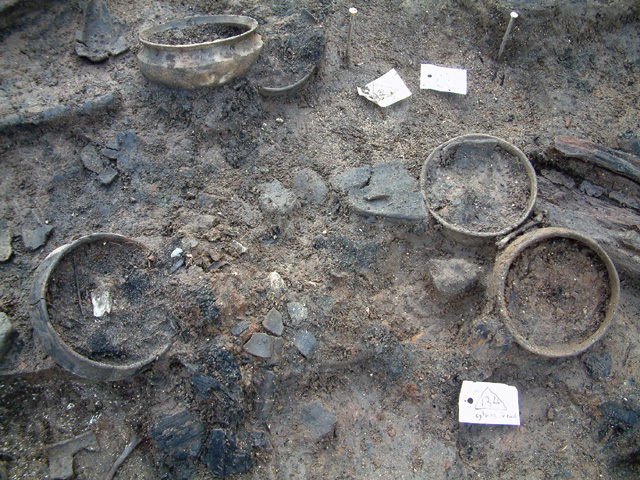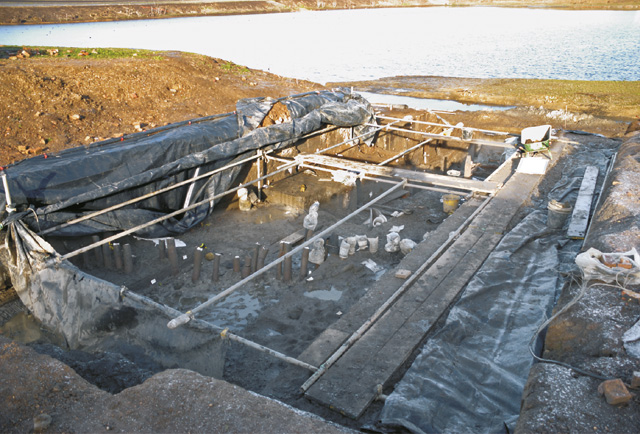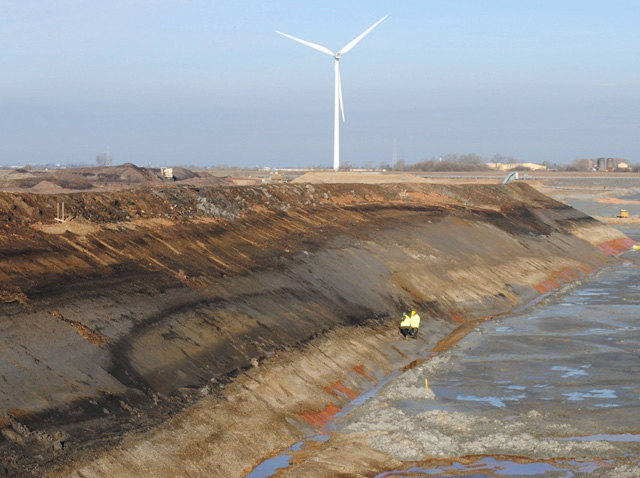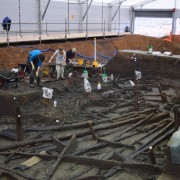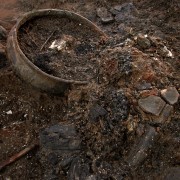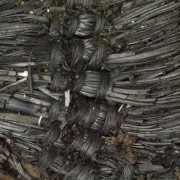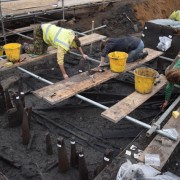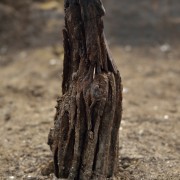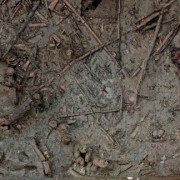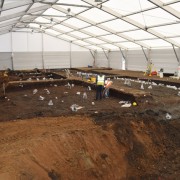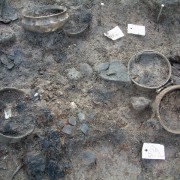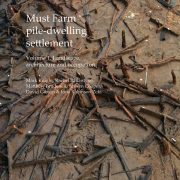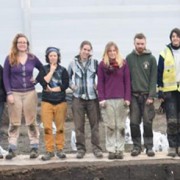Dig Diary 1: Setting the Scene
October 28, 2015
Why is Must Farm important?
The Must Farm Timber Platform is an incredible site. It has surviving 3,000 year old clothing fragments, the remains of a Late Bronze Age structure and even ceramic bowls complete with the leftovers of its last meal. As fantastic as this material is it is important to consider why it survives here and, perhaps more importantly, how the site was discovered alongside how it came to be excavated.
Most excavations in the UK deal with archaeology that exists relatively close to the surface. Often there are traces of archaeology visible in crop patterns, the discovery of finds on the surface and from the results of geophysical investigations. However, this is not the case in the Fens. The landscape during the Neolithic and the Bronze Age was very different from today, it is hidden at depth underneath layers of sediment. Throughout the Fens there is undiscovered prehistoric archaeology we have no idea about as it is completely invisible from the surface.
There have been Bronze Age sites dug in the Fens before, however most of them have been in very specific areas. Most archaeology is currently done in advance of development and most development in the Fens tends to be done on higher ground or towards its edge. Some archaeology has been done where prehistoric features were visible from the surface in areas where the sediment cover was shallower. By largely focusing on these particular locations our understanding of the Prehistoric fens is not necessarily representative.
At the quarry at Must Farm, the brick pit has created an enormous hole which exposes an alternative, deeply buried archaeology. It is only thanks to the depth of the quarrying which gives us this insight into a type of prehistoric landscape that is not normally encountered archaeologically. Therefore the Must Farm Timber Platform provides us a different picture of prehistoric life which will help to give us a more complete picture of later Bronze Age Fenland.
This “hidden” archaeology is something of a mixed blessing. While it buries archaeology deep underground it is precisely this depth which provides such brilliant, complete preservation. The lack of development in these areas means the archaeology is untouched by occupation, modern or otherwise. Equally, at these depths much of the archaeology is effectively sealed in place by non-porous silts and kept damp by waterlogging. These conditions are ideal for preserving the fantastic selection of materials we find at the Timber Platform.
As the excavation progresses it is important to consider that the information we will gather will be contributing towards an understanding of a type of settlement not normally encountered by archaeologists. However, it is also key to remember there are also similarities with other archaeological sites in the surrounding area. Notably, the Timber Platform was constructed and in use at the same time as the nearby Flag Fen causeway. Interestingly, while both share many similarities, the Must Farm Platform has a wealth of domestic material culture associated with it which is not present in the same quantities at Flag Fen.
Over the course of the Must Farm excavation we will be exploring this buried, alternate landscape and how it relates to our current understanding of Fenland prehistory. It is important to remember that not only is this site extraordinary in the quality and preservation of the material being uncovered but also in the very fact it is being excavated.
Related stories
Dig Diary 8: Understanding the Site
December 7, 2015
Dig Diary 7: What is the Timber Platform?
November 30, 2015
Dig Diary 6: Textiles
November 23, 2015
Dig Diary 5: Revealing the Remains of the Fire
November 16, 2015
Dig Diary 4: Asking the Right Questions
November 9, 2015
Dig Diary 3: Uncovering the Archaeology
November 2, 2015
Dig Diary 2: Introduction to 2015 Excavation
October 30, 2015
Dig Diary 1: Setting the Scene
October 28, 2015
Learn more
About
The Must Farm pile-dwelling settlement was excavated by the Cambridge Archaeological Unit with funding from Historic England and Forterra.Publications
Read the Open Access publications the Must Farm pile-dwelling settlement: Volume 1. Landscape, architecture and occupation and Volume 2. Specialist reports.Post-Ex Diaries
Our work on-site has finished but lots more investigation is taking place as we study both the material and the evidence we recovered. ...read more
Discoveries
See some of the discoveries from the Must Farm pile-dwelling settlement.
Making Must Farm
Find out about our work with AncientCraft recreating Must Farm’s material.
FAQs
Further information on the Must Farm project.

